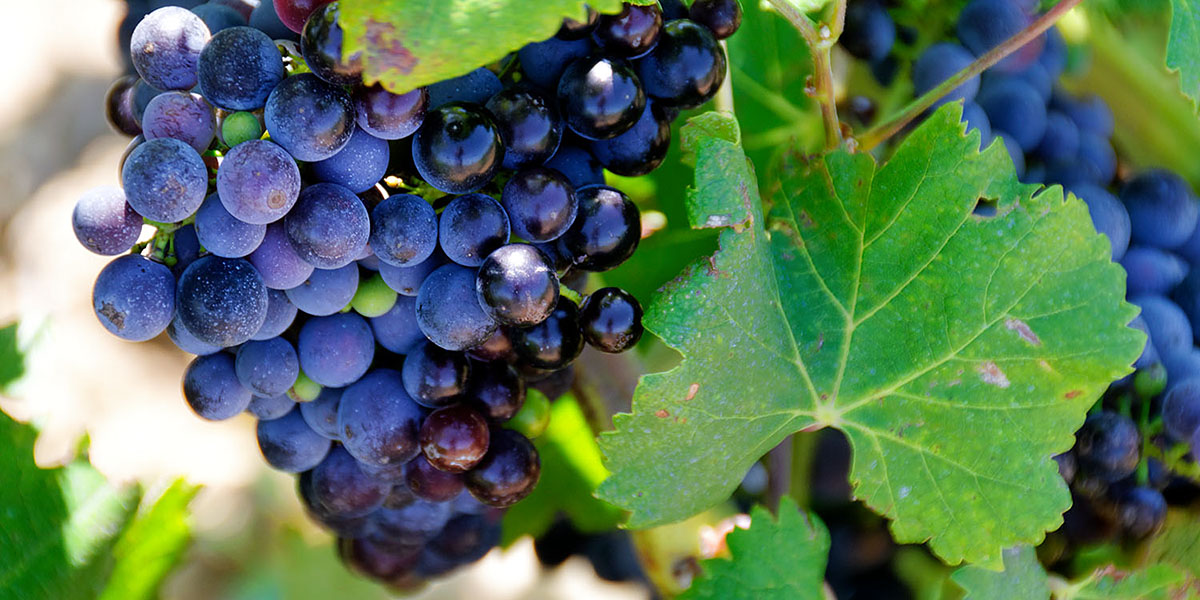
In late July, these beautiful grapes presage an excellent Berthet-Rayne 2011 Côte du Rhône
Back in April, my friend Didier and I had visited the Domaine Berthet-Rayne where we had been treated to a guided tour of the winery as well as a tasting of their really fine wines. At the time, the vines were just past the flower stage and the future grapes barely visible. We therefore went back on July 29, 2011 to see how the fruit had grown. We were surprised to see how well-developed the grapes already were. Indeed, the high temperatures accelerated their development, and we were told that the harvest would probably be in early to mid September, two weeks earlier than anticipated.
We also learned that severe hail storms in June had destroyed a large number of vines, but that the surviving plants were producing so many grapes that the anticipated harvest was certainly not going to be below expectations in terms of quantity and almost certainly above expectations in terms of quality. The positive impact of the storms was that they brought much needed water, and a good balance of water and sunshine is essential for the quality of the future wine. It has to be said that AOC rules prohibit watering, so vintners are very much at the mercy of the weather.
Click on any image to see a larger (1500 x 1000 pixel) version!
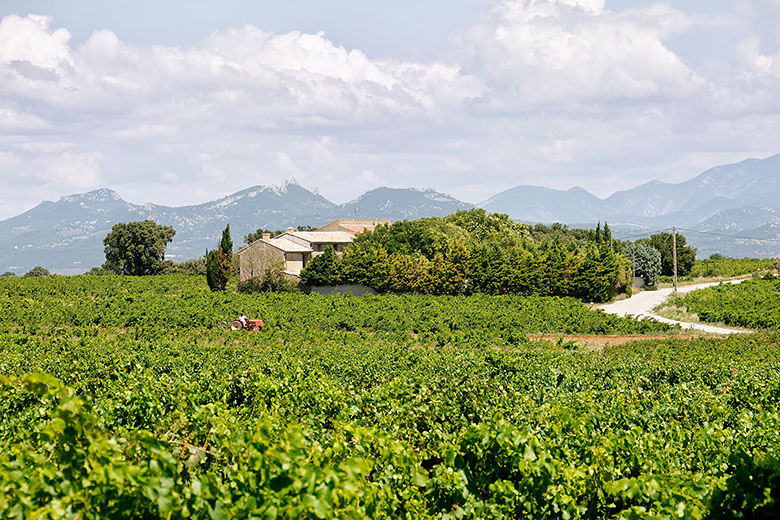
|
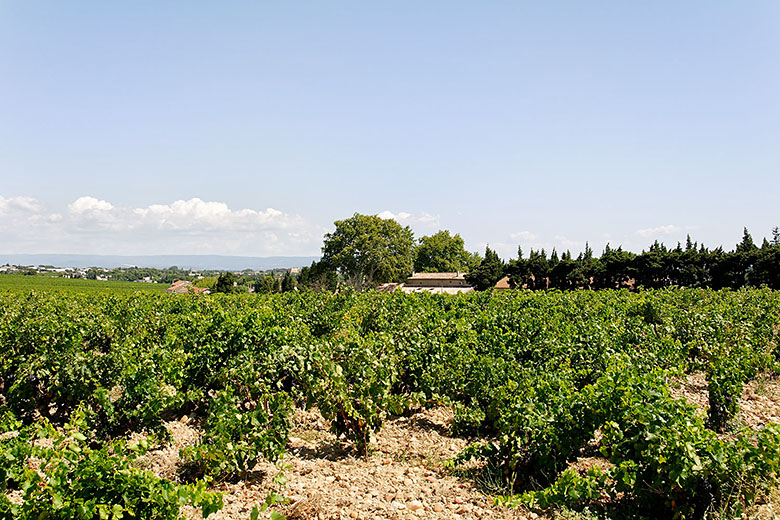
|
Looking east towards the Dentelles de Montmirail |
The main building is behind the cypress trees on the right |
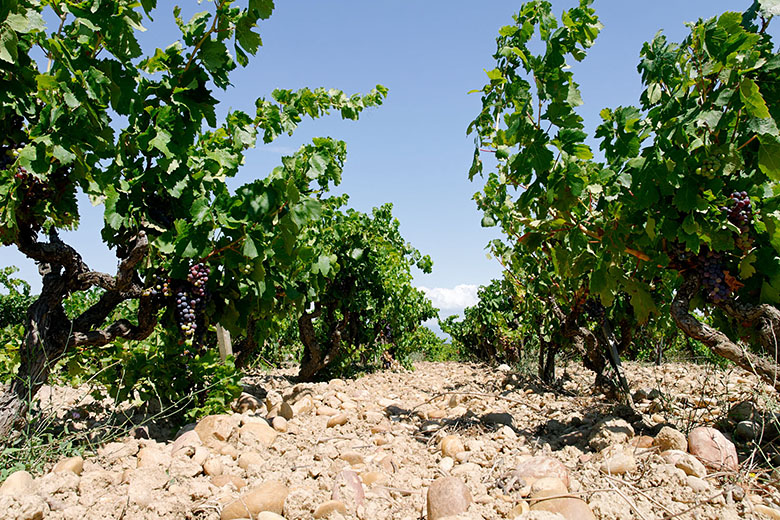
|
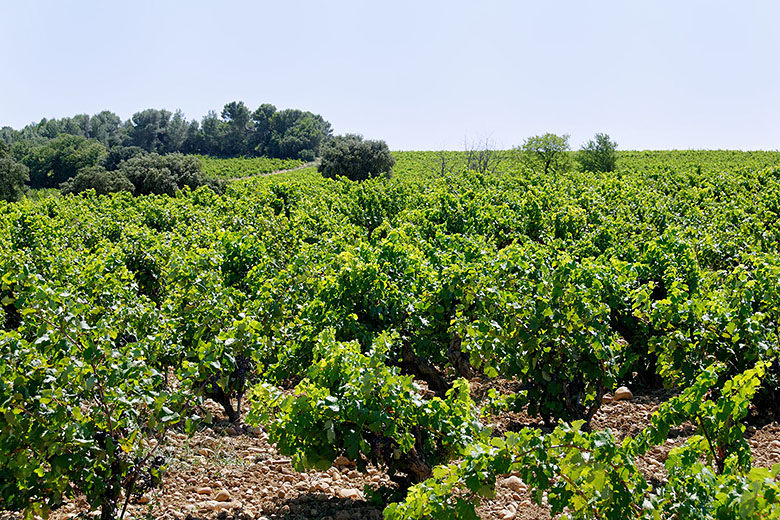
|
The galets roulés provide much needed warmth |
Looking towards the north |
Time now to move in for a closer look at the grapes. I was surprised to find how the color of the same grapes can vary depending on whether they are in direct sunlight, in the shade, or indeed, whether one uses a little bit of fill-in flash to brighten them up. What is also impressive is how many grapes there can be in a single bunch. This seems to corroborate what we were told, namely, that in spite of losing part of the fruit to hail, the estate's production will not be diminished
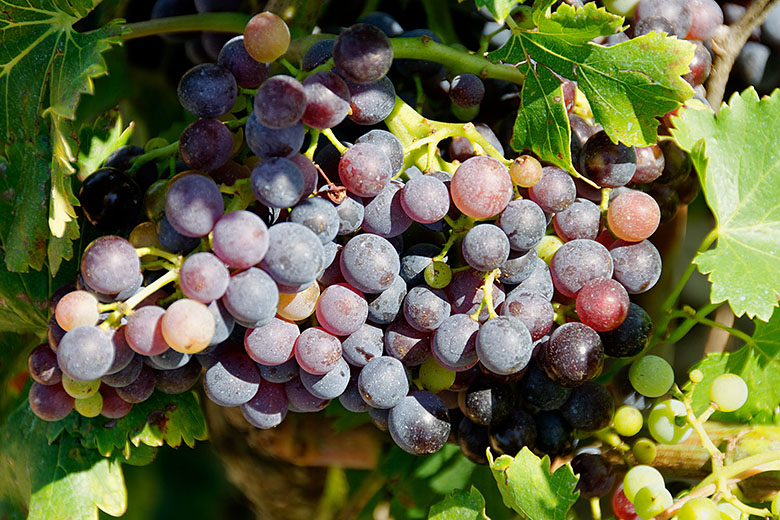
|
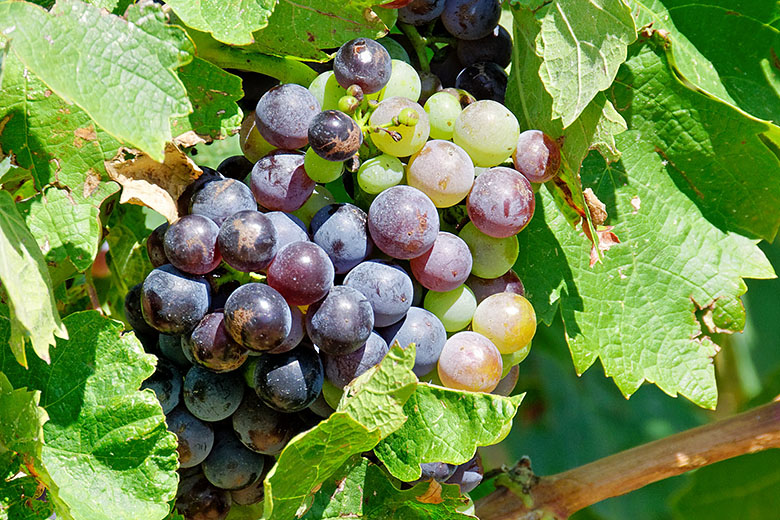
|
It took quite a bit of self-control... |
...not to dig in and eat at least some of these grapes! |
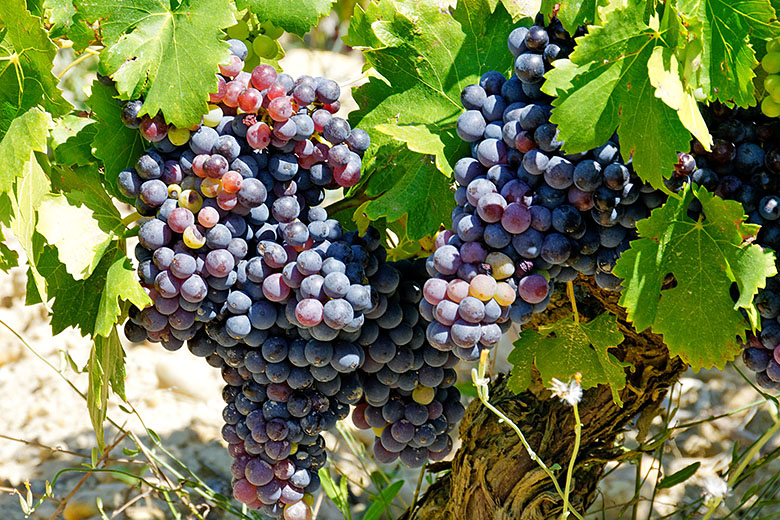
|
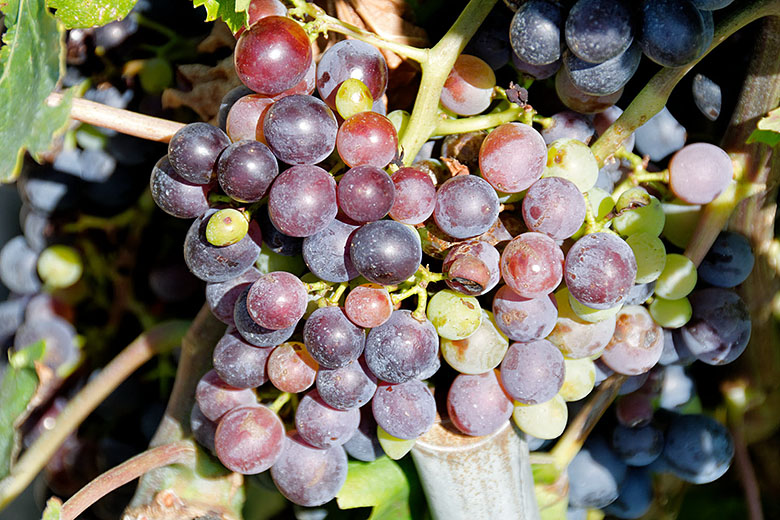
|
Large bunches like these are quite heavy |
The grapes are a different color depending on the light |
On the Berthet-Rayne estate, a small road marks a border of sorts: the grapes grown to the west of the road (on the left in the photo below) will become Châteauneuf du Pape whereas those on the other side are destined to become Côte du Rhône. This is by no means the vintner's choice: AOC rules specify exactly where grapes have to be grown so that the wine made from them can be called Châteauneuf du Pape, and the east side of that particular road is not part of that specification. If you think that this is terribly unfair to the grapes on the right side of the road, you have not tasted the outstanding quality of a Berthet-Rayne Côte du Rhône!
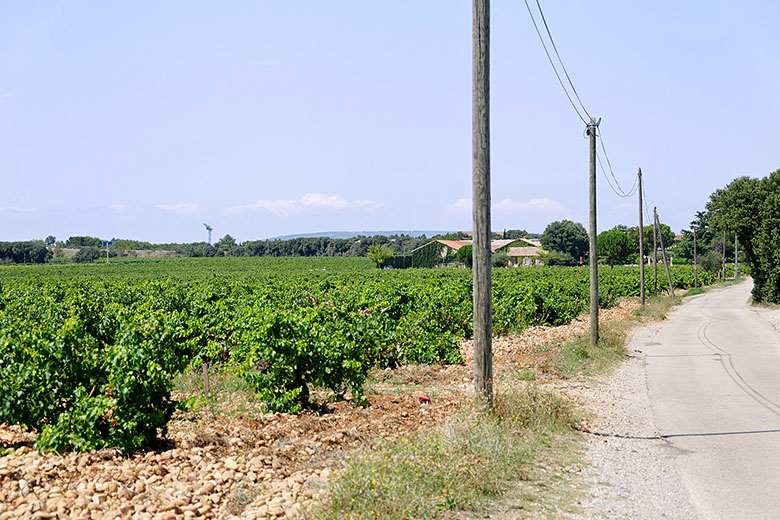
|
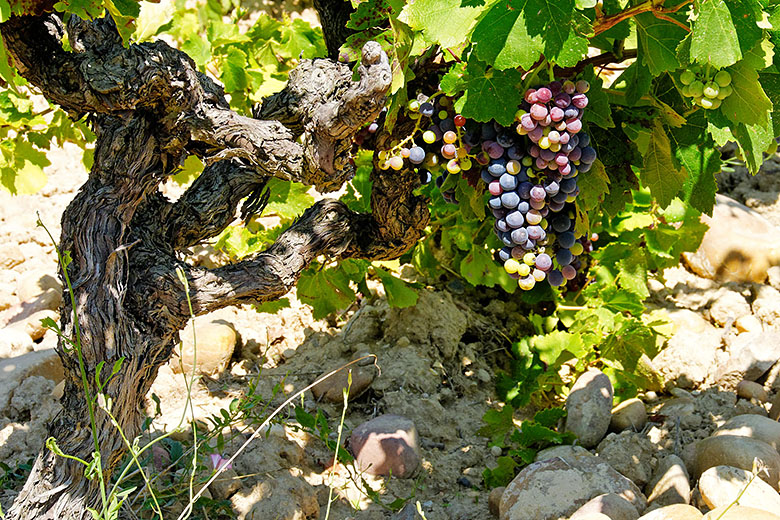
|
The border between Châteauneuf du Pape and Côte du Rhône |
Future Châteauneuf du Pape |
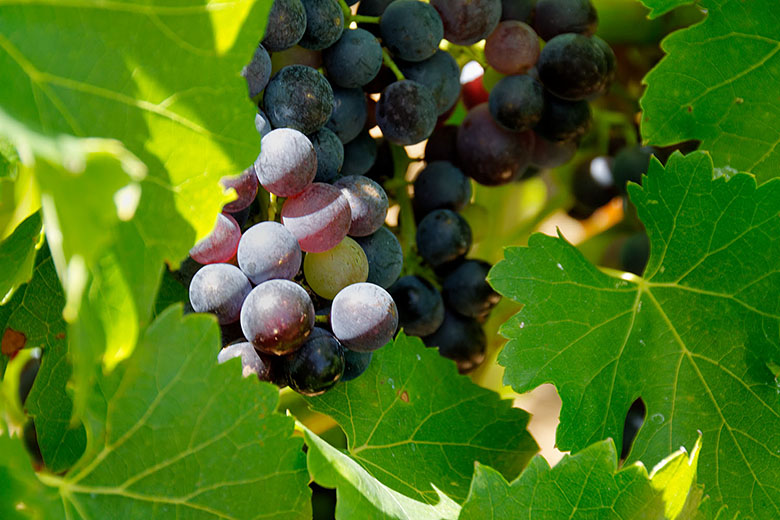
|
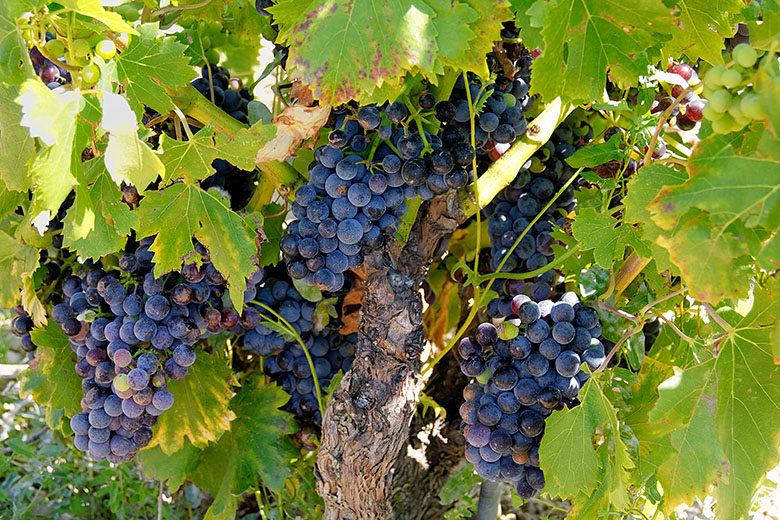
|
All these gorgeous grapes... |
...are products of organic agriculture |
Because we did have a bit of time, we decided to drive eastwards to see how the Muscat grapes were doing. We parked the car next to Notre Dame d'Aubune, a small chapel located on the side of the mountains above Beaumes-de-Venise. The chapel was completed in the 7th Century and fully restored inside and out in 2007. All around, the terrain has been terraced, and it is on the resulting plateaus that the Muscat grapes are grown. Muscat grapes are naturally sweet, and this sweetness is accentuated by adding alcohol during vinification. This has the effect of halting the process of converting sugar into alcohol and so one ends up with a very sweet dessert wine, and of course without having to add (heaven forbid!) sugar. Having said that: the grapes already look sweet on the vine, an impression we verified empirically (yes, I confess, we did indulge in a taste!)
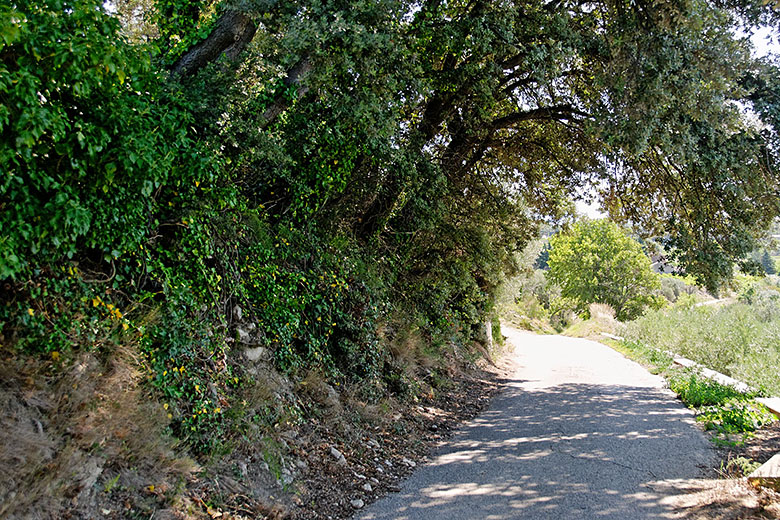
|
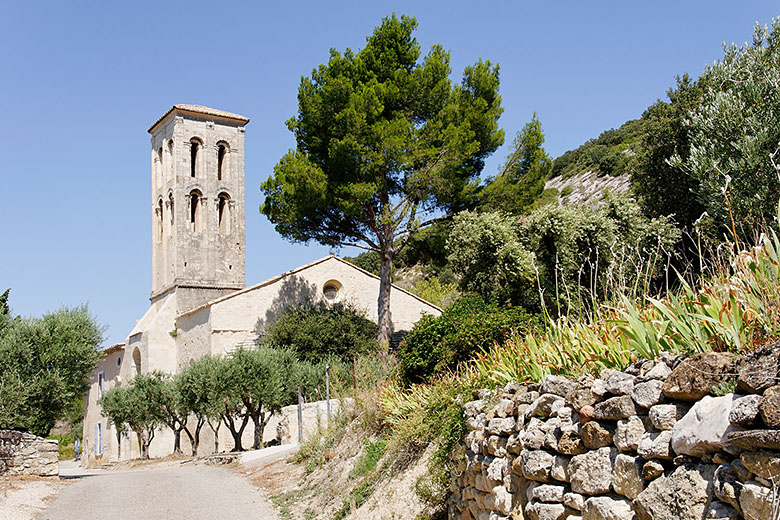
|
The road up the mountain |
Notre Dame d'Aubune |
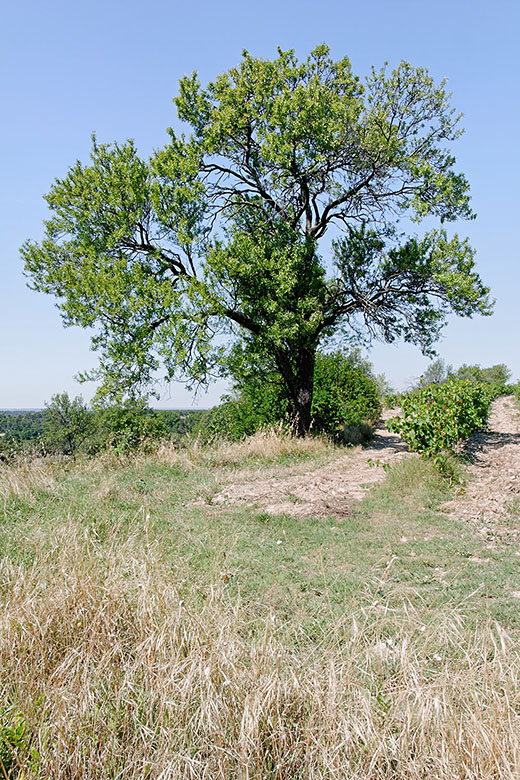
|
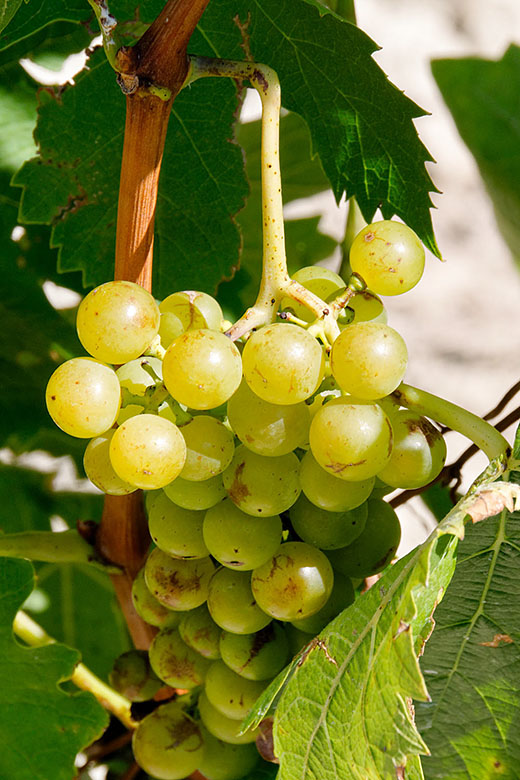
|
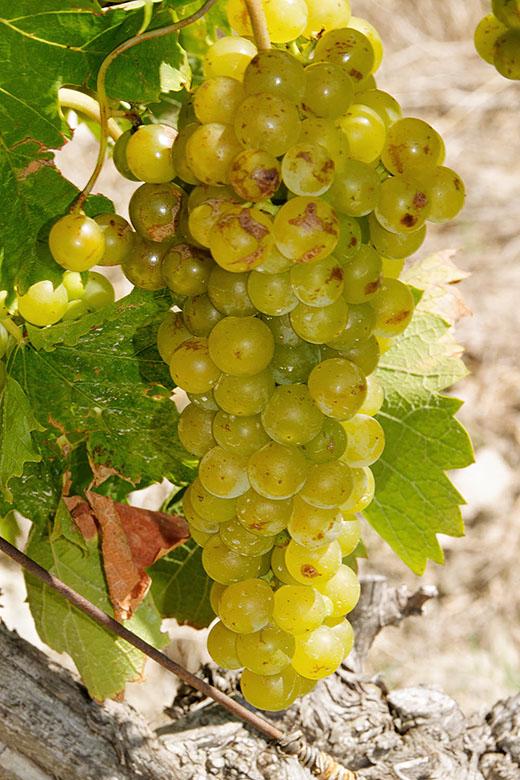
|
Vines under a tree |
Light grapes are far less prone... |
...to color shifts as the light changes |
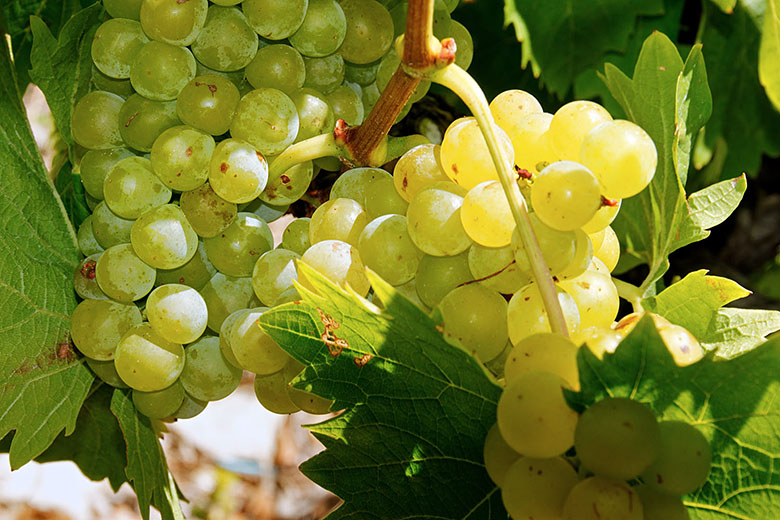
|
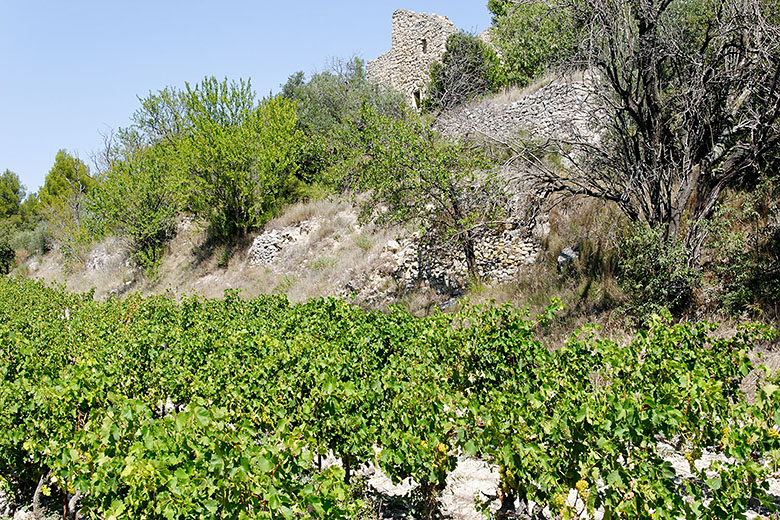
|
Wouldn't you want to taste one... or two? |
The vines are grown on terraces |
This was the second time Didier and I journeyed to the wine country, and if all goes well and our plans work out, we aim to return a third time to photograph the harvest. Stay tuned!
Home | Site Info | Family | The Area | Trips | France | Work | Rants | Photography | Odds & Ends
This page was last modified on July 25, 2012
Send feedback about this page to feedback@kiechle.com
https://www.kiechle.com/oddsends/grapes/index.htm
(optimized for Retina display)
All contents © 1999-2026 The Kiechles